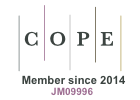Abstract
The paper discusses fungi of 24 glacial relict plants: Arenaria ciliata L. subsp. ciliata, Betula nana L., B. pubescens Ehrh. subsp. carpatica (Willd.) Asch. & Graebn., B. pubescens subsp. czerepanovii (N.I. Orlova) Hämet-Ahti, C. magellanica Lam. subsp. irrigua (Wahlenb.) Hiitonen, Carex rupestris All., Cerastium alpinum L., C. cerastoides (L.) Britton, C. eriophorum Kit. in Schult., Chamaedaphne calyculata (L.) Moench, Dryas drummondii Richards, D. grandis Juz., D. integrifolia Vahl., D. octopetala L. s.l., Empetrum hermaphroditum Hagerup, E. nigrum L., Juncus trifidus L., Loiseleuria procumbens (L.) Desv., Pedicularis sudetica Willd., Rubus chamaemorus L., Salix herbacea L., S. lapponum L., S. reticulata L., and Saxifraga nivalis L., The work is attempt at application of some fungi (Ascomycota, Chytridiales, Ustilaginales, Uredinales, mitosporic fungi) as guides in vascular plant phytogeography and explanation of the origin of selected glacial relict plants. Parasites and exclusive (specialized) for particular host plant species are the most important fungi for biogeographic analysis. A fungal markers method (FMM) was used. The fungi and host plants for the present study were collected in the mountains and peat bogs of Poland, the Czech Republic, Lithuania, Slovakia, Sweden, Russia and Ukraine. Also materials from Austria, Canada, France, Greenland, Korea, Spitsbergen, Switzerland and U.S.A. were examined. A total of 254 taxa of fungi were collected from 1329 localities investigated. Exclusive species of fungi for all examined host plants have been distinguished. Only Dryas octopetala s.l., D. integrifolia, Empetrum nigrum, E. hermaphroditum, Chamaedaphne calyculata and Rubus chamaemorus possess a number of exclusive species sufficient for analysis. In some cases it was possible to define the direction of migration of the host plants (Betula nana, Juncus trifidus, Dryas octopetala s.l.) on the basis of mycological data. For dryads the extremely High Arctic track is more important than the Middle Arctic or Low Arctic ones. The waves of migrants moved from the East via Spitsbergen to-wards Greenland. Dryas octopetala seems to have reached the Carpathians from the West. Relative age of some fungi has been estimated. Wide circumpolar and alpine distribution points out that Isothea rhytismoides (Bab. ex Berk.) Fr. is one of the oldest dryadicolous fungi. The limited ranges of Sphaerotheca volkartii Blumer, Synchytrium cupulatum Thomas, Hypoderma dryadis Nannf.: L. Holm, and Epipolaeum absconditum (Johanson) L. Holm indicate a relatively young age of these species. A four new taxa i.e. Lachnum uralense, Leptosphaentlina sibirica, Melanomma margaretae and Tiarospora pirozynskii are described and illustrated. 27 species arę for the first time reported from Poland.
Keywords
Arctic-alpine fungi; glacial relict plants; taxonomy; phytogeography; coevolution; fungal markers method






